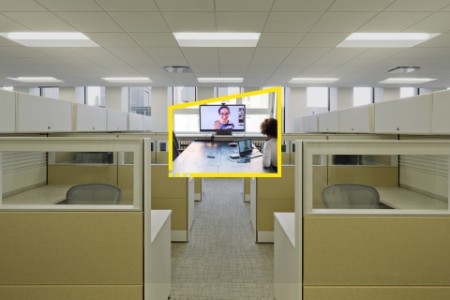Organizations shouldn’t be obsessed with technology. They should be obsessed with people, who are the organization.
Companies that place humans at the center – while leveraging technology at speed and enabling innovation at scale – accelerate the value they create in the long term while making strides to reframe and thrive in the future. So, how do you build a Human Enterprise? There are four critical approaches:
1. Up the humanity
Put the needs of people at the center of strategy and decision-making. Organizations must ask questions that focus on the human implications of every decision, whether it concerns customers, employees or the wider communities within which the organization operates. Research we conducted with the Harvard Business Review found that companies operating with a clear sense of purpose, beyond just making money, outperformed the S&P 500 index by a factor of 10. CEOs are well aware of this: 73% of the almost 1,500 CEOs we surveyed across a dozen countries and 10 industries said they believe that having a well-integrated purpose helps their company navigate disruption, while 66% were rethinking their organization’s purpose due to the current disruptive environment.
2. Remove friction
Technology should remove friction and allow people to do their jobs while enabling speed and agility. This means ensuring a culture of connectivity where there is trust, free-flowing ideation, and the ability to collaborate seamlessly. Technology can also remove interpersonal friction, by helping to build trust and transparency — for example, blockchain and analytics can help make corporate records more trustworthy, permitting easy access for regulators and auditors that may enhance trust inside and outside the organization. This is important; one study found that transparency from management is directly proportional to employee happiness. And happy employees are more productive employees. Technology also should save employees time, freeing them to take advantage of opportunities for human engagement (or, in a pandemic scenario, enabling virtual engagement) – as well as allowing people to focus on higher-value tasks.
3. Value inclusion
It’s vital that businesses recognize diversity and inclusion as a moral and a business imperative, and act on it. Diversity can boost creativity and innovation, improve brand reputation, increase employee morale and retention, and lead to greater innovation and financial performance. For instance, research from the Peterson Institute for International Economics found that going from no women in corporate leadership to a 30% share could lead to a 15% increase in profitability. A Cloverpop survey found that while teams made better decisions than individuals 66% of the time, diverse teams outperformed individuals 87% of the time. There are countless other studies with similar results.
4. Deliver at speed
A Human Enterprise is organized around impact, not processes, and values agility over hierarchy —thus facilitating fluid, diverse teams that bring in the best creative thinking, who can work effectively with technology to deliver faster innovation at scale.
Ultimately, the benchmark for successful technology comes down to whether it’s helping the humans in an organization do what they need to do. Businesses that want to continue to deliver value and help ensure enterprise resiliency in this time of rapid change should aim to become Human Enterprises — putting humans and their needs at the center of their strategies, values, processes, and operations, with technology serving as an enabler rather than a driver of change.
There’s an iconic scene in the classic movie, 2001: A Space Odyssey, where one of its characters, the HAL 9000 computer, comes to its own decisions that conflict with astronauts on a mission. It’s a powerful and eerie image of humanity being overwhelmed by technology. In today’s landscape of rapidly evolving mass automation, shifting consumer expectations, regulatory pressures, and the continual threat of disruption from new tech-driven competitors and business models, the technology has changed, but the anxiety remains the same. As the world becomes more tech-centric by the minute, humans must drive change and direct technological investment and adoption.
Both the COVID-19 crisis and the global response to societal inequities and injustice have shown that focusing on people and their needs — both within the organization and externally — can help to ensure that companies are making it a top priority to consider the potential impact of business decisions on all stakeholders. A Human Enterprise recognizes that transformation is a constant evolution, not a fixed destination. Just as business leaders today need to keep an eye on what’s coming, even as they battle today’s challenges, a Human Enterprise keeps adapting without being held back by legacy technologies, systems and processes.
This article was republished with permission and originally appeared on HBR.org under the title "Tech should enable change, not drive it."
This material has been prepared for general informational purposes only and is not intended to be relied upon as accounting, tax, legal or other professional advice. Please refer to your advisors for specific advice.
Related article
Summary
Technology won’t deliver competitive advantage all by itself. To truly transform in a time of rapid change, businesses should become Human Enterprises, putting people and their needs foremost. By employing the four critical approaches – up the humanity, remove friction, value inclusion and deliver at speed – organizations can accelerate the value they create in both the short and long term.


